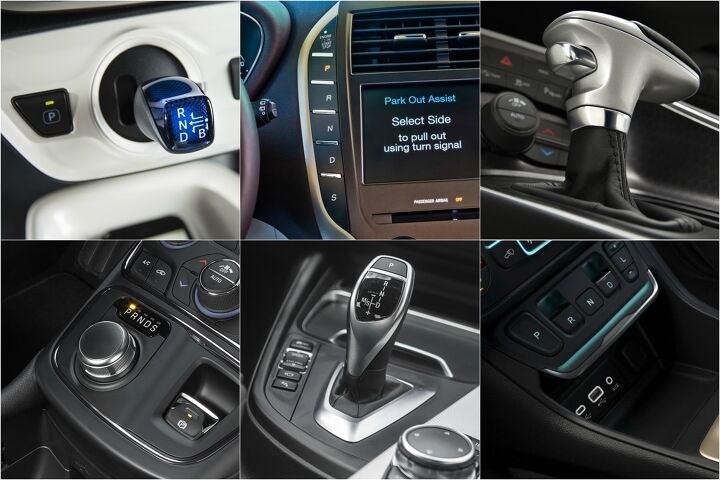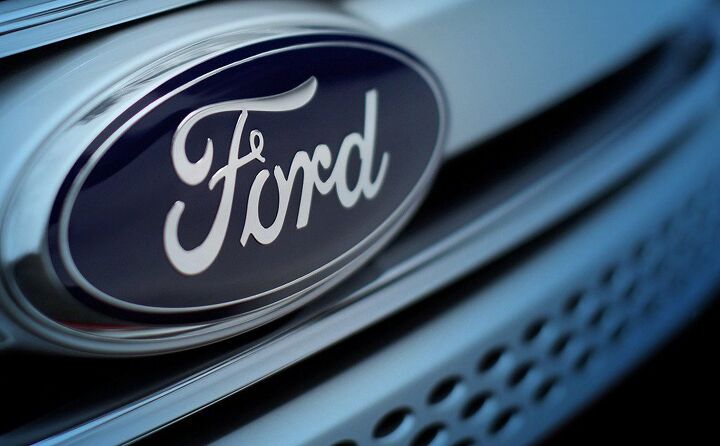#Technology
Android Auto Is About to Get a New Look - Many of Them, Actually
Over spring break, my family went skiing in Breckenridge. We flew into Denver and drove the rest of the way to get there, saving a bunch of money and giving me the exciting chance to pilot a top-of-the-line Cadillac Escalade. The first thing I did after getting into the car was connect my phone so I could hijack the big touchscreen and have my own Google Maps for navigation.
Switching back and forth from Android Auto to the native Cadillac Cue experience could best be described as jarring. Two different worldviews of design, coexisting poorly. Different icons. Different visual styles. Different everything. You may enjoy my Strangelovian rant from 2014 when Google first introduced Android Auto.
With that in mind, Google I/O, Google’s annual developer conference at the Shoreline Amphitheater in Mountain View, is in full swing.
So what’s new with respect to Android Auto? Customization.
Blame Technology: Awful Shifters Will Continue Until They're Made Great Again
Center-mounted in a vertical fashion, the shifter in the fifth-generation 2018 Honda Odyssey profiled yesterday by Chris Tonn requires drivers to push a rectangular button for park, pull back an indented button for reverse, push another rectangular button for neutral, or depress a square button for drive.
In the new, second-generation 2017 GMC Terrain, a low-slung horizon of shift buttons mandates pushes of a rectangle for park and a small square for neutral plus a slight pull for reverse or, farther to the right, drive.
Perhaps you’re familiar with the lengthy push-button shift mechanism in newer Lincolns, where buttons for ignition, park, reverse, neutral, drive, and sport are laid out vertically on the driver’s side of the centre stack.
Some automakers are trying out rotary knobs, or shifters with separate park buttons, or monostable shifters that have earned a bad name.
They’re here to stay. Blame technology. Hope for reliability. Don’t expect standardization.
Nissan Considers Bringing Its Unusual E-Power Technology to America
The success of Nissan’s e-Power system in the Japanese-market Note hatchback has company brass considering a trans-Pacific trip for the technology.
Should it arrive stateside, e-Power stands to give Nissan an edge in low-priced electrification — potentially undercutting the price of compact hybrid rivals by thousands. Unlike conventional hybrids and plug-in models, Nissan’s system burns gasoline every moment of the drive, despite an electric motor doing all the pulling work.
Nissan 'Develops' Unnecessary Signal Shield to Eliminate Smartphone Distractions While Driving
Last week, Nissan’s European division proudly announced that it had developed a new feature for use in the Juke that effectively eliminates all cellular signals. In the release, the company praised its UK team for coming up with a 21st century application that uses Victorian-era technology, saying “the beauty of the design is its simplicity.”
Obviously, Nissan is making a play to convince news outlets to cover the prototype and highlight the company’s clever engineering and commitment to safety. While we will happily take the bait and comment on the device, we would be negligent in our duties to consider the item as anything other than an complete waste of resources. The Signal Shield is as useful to motorists as a pair of gloves would be to a person without arms.
Here's What the Average Buyer is Willing to Pay to Avoid Doing All the Driving
While many would argue that piloting your own vehicle is a key part of freedom and enjoyment of life, there are times when we really wish our vehicle could take us home from the bar. Cabs are expensive, Uber is potentially unavailable, and transit, well… it would have to be very good transit.
While vehicles with fully autonomous Level 5 driving modes remain out of reach, automakers are busy trying to wrestle that steering wheel from your hands. Already, most vehicles employ some level of mild self-driving abilities, whether it’s keeping your crossover between the lines, braking automatically to avoid that driver who’s allergic to signalling, or parallel parking itself. It’s nice to have some help sometimes.
However, just because people like protection on the road doesn’t mean they’re not also protective of their wallets. What is your average car buyer willing to pay for these conveniences?
Stop Being So Mean to Diesels, Pleads Jaguar Land Rover Boss
Ralf Speth isn’t having it. Across Europe governments are cracking down on the use of diesel vehicles in a bid to lower air pollution, especially in the Jaguar Land Rover CEO’s own country. London has announced plans to levy stiff charges on anyone driving a diesel-powered vehicle through central areas of the capital starting in early 2019, adding fuel to the anti-diesel fire. Paris, Berlin and Athens also plan to ban the technology.
With compression ignition still a significant part of the automaker’s engine lineup — both in Europe and North America — Speth recently defended the technology’s importance in a finger-pointing spiel. The world needs diesel, he claimed, and the media (and Volkswagen) haven’t done anything to help the situation.
Study: Overall Trust of Autonomous Vehicles Declines, and No One Cares What Generation X Thinks
Poor Generation X. Isolated, ignored and cynical, they brought us great music in the early-to-mid 1990s, but their opinion on self-driving cars and autonomous safety features just isn’t important.
At least, that’s the feeling you get while reading the results of J.D. Power’s U.S. Tech Choice Study. The company polled 8,500 Americans who bought a vehicle during the past five years, asking them how they felt about the emerging technology.
Naturally, large generation gaps appeared, not the least of which was the elimination of Gen Xers in favor of the opinions of Boomers, Generation Y and Z. So, how does the opinions of the largest car-buying cohort compare to that of the newest?
Forget Automakers, Now AAA Wants to Lend You a Car
Automakers, both domestic and come-from-away, all want you to do the next best thing if your meager funds aren’t enough to get you into a showroom: borrow a car.
Ride-sharing services provide mainly urban dwellers with the car they so desperately crave, without the years of payments or need to find permanent parking. And, if an automaker partners up with a service provider — or creates its own — there’s still money flowing back to the offices of Big Auto. Win-win, no?
The growing trend is hard to ignore, and it means that automakers — already new to the game — face ever greater competition, even from unlikely sources. The latest company to offer a ride-sharing service isn’t a manufacturer at all. It’s the American Automobile Association.
Nissan Prepares to Rejoin the Competition With Next Wave of Electric Vehicles
Consumer demand may be the driving force behind automakers shifting assembly line production toward crossover vehicles, but there is another trend that has nothing to do with modern-day sales. Electric vehicles have a small but loyal consumer base and the majority of carmakers seem poised to ensure the next decade caters directly to them — whether it be through pure BEVs or hybridized powertrains.
However, not every manufacturer has its electrified ducks in a row. Despite hitting its mark with the Leaf EV, Nissan has been resting on its laurels since 2010 and hasn’t made the same sort of technological promises that Volkswagen Group or Ford cannot help but keep repeating… over and over again. Nissan’s chief planning officer Philippe Klein even admitted in January that his company’s EV prospects are dim and something needs to be done.
Cadillac's Super Cruise is Super Late, Takes Aim at Autopilot
Cadillac announced its autonomous driving system Super Cruise is ready and will be available this fall. The system, designed to compete directly with Tesla’s Autopilot, will first appear on the Cadillac CT6.
It doesn’t sound like GM has pulled any punches. Super Cruise is touting some serious features.
Autonomous Vehicle Legislation Could Be Modeled After Vaccines
Every time we write an article about autonomous vehicles, our comments section is quickly populated with discourse over how litigation would be handled in the event of a crash. Who do you sue?
You can’t fault the driver, because a truly self-driving car takes them out of the equation. Suing the manufacturer doesn’t work because, assuming the system functions properly, they’re still saving lives and shouldering all of the risk would discourage companies from bothering to pursue the technology.
However, autonomous accidents will happen and someone is inevitably going to appear in a courtroom. The justice system has to decide how that will be handled, but Automotive News’ Katie Burke has an interesting solution. It relates to how the United States deals with legal actions involving vaccinations.
Panasonic's Automotive Influence Grows as Company Takes Over Supplier
The company once known mainly for its televisions is growing ever-longer tentacles into the automotive industry.
Panasonic, which is already a major battery supplier for electrified vehicles, has bought a majority stake in a Spanish auto parts supplier, giving it a larger foothold in the automotive realm.
2017 Honda Clarity Fuel Cell First Drive Review - Breaking Dawn, Part Three
It’s never easy trying to whip up an air of exclusivity through your daily driver, and nowhere in the U.S. is this truer than in southern California. Whether it’s ultra exotics driven by the Beautiful People or rust-free rarities carefully maintained with end-of-week savings, chances are your neighbor, friend or coworker’s ride makes your commuter car — premium or not — look as banal as dry toast.
How does a car buyer turn heads, ideally while projecting an all-caps message about their chosen lifestyle, without breaking the bank or A-Teaming a tired sedan into some sort of grotesque absurdity? Honda has the answer.
For now — and Honda accountants would prefer that the “rarity” period remains a short one — driving a leased Clarity Fuel Cell sedan puts you in a very exclusive club. By month’s end, Honda expects the number of next-generation, hydrogen-powered five-seaters plying the roadways of the Golden State to top the three-figure mark. Huge numbers, for sure.
Next thing you know, the person you hired to walk your dogs might pull up in one.
Carbon Fiber Could Be Coming to a Ford Subframe Near You
If you’re worried that your corroded subframe will one day eject your car’s engine or suspension components like a spent hull from an Ithaca pump, the future holds promise. (Though you should still get that undercarriage checked out.)
Ford Motor Company, working with mega supplier Magna International, has developed a prototype vehicle subframe made of carbon fiber-reinforced composites. The goal is to one day offer a subframe that’s impervious to rust, while reducing weight and complexity.
Macchina Brings Car Hacking To The Masses
Tuners and researchers have searched for ways to pull data from cars and modify it ever since the introduction of the first on-board computer in the late 1960s. The advent of fuel injection and computer-controlled engines in the 1990s brought computerized tuning front and center. And while the OBD2 standard — made mandatory in 1996 —standardized the interface and made it easier to read diagnostics and log some parameters, modification and advanced logging was still complicated and expensive.
Professional tools and open source hardware popped up in the past decade to allow deeper access into a car’s electronics, but most ready-made products were still expensive. Open source variants also required knowledge of soldering and programming. Now, Macchina has taken the best of both worlds and packaged it into an inexpensive product that should prove useful for researchers as well as tuners.





























Recent Comments